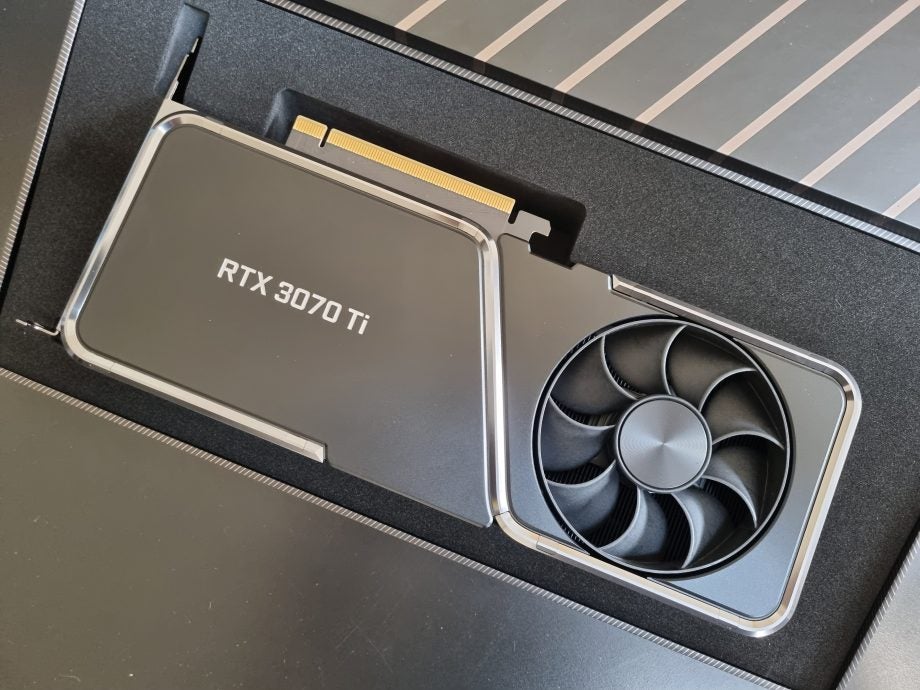Nvidia needs to make 3 big changes to its RTX 4000 GPUs

OPINION: Nvidia looks to be on the verge of releasing its next generation RTX 4000-series graphics cards, and there’s plenty to get excited about.
Picking up from the legacy set by the RTX 3000-series I reviewed over the past few years, which remain among THE best graphics cards currently available, the 4000-series is expected to bring even more key upgrades.
Rumours suggest we’ll get even better 4K ray tracing performance, which will be a boon for gamers who want the best graphics possible, more efficient DLSS to help boost framerates plus a wealth of other goodies.
But for me, there are 3 key issues I had with the older RTX 3000 cards that Nvidia needs to address if it wants to keep its place as the best option for gamers.
Here’s what they are.
Sort thermals and TDP
When reviewing the RTX 3080, RTX 3080 Ti, RTX 3070, RTX 3070 Ti and RTX 3060 Ti graphics cards, there were two common issues I constantly found. Specifically, while they offered fantastic performance, and radically better frame rates than the older 20-series, they were outright power hogs and had no room for overclocking.
Nvidia set the cards up so that the founder’s edition models I tested were pretty much clocked at capacity, with all my overclocking attempts leading them to overheat or fail fairly fast. This wasn’t a deal breaker as they were already very fast, but it meant there wasn’t a lot of room for third part OEMs like Asus and MSI to improve performance.
Their high-power consumption also meant I actually had to upgrade my test bench’s PSU just to accurately test them. Given how expensive PSUs can be, the faff of swapping them out in a desktop and the ongoing cost of living crisis, I’d really like to see Nvidia reduce the power consumption for its next cards.

Usauble ray tracing on cheaper cards
It’s no secret that I really liked the RTX 3060 Ti. For the money it offered a stable ray tracing performance in 1080p, and became an easy recommendation for buyers that couldn’t afford Nvidia’s more expensive 1440p-focussed RTX 3070 and 4K 3080 cards.
But, despite being great for 1080p it was a mid-range graphics card with a starting price at £369. That’s likely too expensive for many gamers, costing even more than an Xbox Series S console.
The cheaper RTX 3050 Ti and 3050, which were Nvidia’s entry level cards, but couldn’t offer post-60fps gaming on demanding titles with ray tracing on. This meant that you had to make performance sacrifices in order to benefit from the advanced shadow and lighting effects. DLSS did help to alleviate those issues, but it would be nice to not have to be reliant on the software.
For the 40-Series I’d like to see Nvidia fix this issue and finally offer gamers who can’t afford a top-end card post-60fps speeds with ray tracing on.
Have enough stock at launch
Though you wouldn’t think it now with the wave of discounts being made to clear 30-series stock, the biggest gripe I had with Nvidia’s 30-Series GPUs at launch was that they were impossible to actually buy.
Thanks to a supply chain shortage and boom in crypto currency mining, RTX 30-series cards were outright flying off the shelves. Even if you could find them online, they also had extortionately inflated prices. I remember seeing the sub-£400 RTX 3060 Ti retailing for over £1000 on eBay mere hours after it launched.
With that in mind, I hope Nvidia makes sure to have enough stock to meet demand when it launches its next generation RTX 4000 cards.








